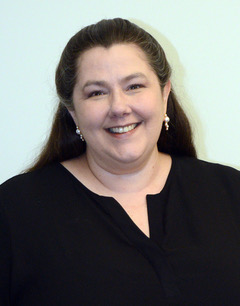BY MAGGIE BEAMGUARD, Insider Editor
About the time I was sending the pecan pie down the table to my brother-in-law last Christmas Day, NASA mission specialists were executing a precise trajectory maneuver of a $10 billion telescope on its million-mile journey from earth.
Earlier in the day, as torn wrapping paper littered the living room, our family conversation turned to the launch of the James Webb Space Telescope, which occurred earlier that morning at 7:20 a.m. The technological marvel promised to help us look further back in time than ever before to gaze at the earliest galaxies.
I thought about that cozy Christmas Day when NASA stunned the world last month with the first images reflected by the gold-coated honeycomb mirror of the space-bound observatory.
The first five images featured among them Stephan’s Quintet. Most people may recognize it from its grainy, black and white depiction in “It’s a Wonderful Life.” In that pre-moon landing Christmas classic, it is portrayed as the home of angels looking over the despairing every-man George Bailey.
The new infrared image shows the five galaxies of the colorful cluster swirling around each other in a cosmic dance — surrounded by the whooshes of gas and dust they kick up and overseen by radiant, young stars. If there are such things as angels, it’s not hard to believe they would take up residence in such a place.
We saw again other previously observed features of the universe, but with renewed awe in their clarity and detail: the Carina Nebula with its dramatic “Cosmic Cliffs;” the spectacular Southern Ring Nebula — the last gasp of a dying star; and the “Deep Field” of the most distant part of our universe we are capable of seeing. A fifth image showcased a water signature of WASP-96 b, one of more than 5,000 confirmed exoplanets in our galaxy, along with evidence of clouds and haze.
People way more qualified than I — astronomers, physicists, technologists, engineers, futurists, scientific journalists, even poets — have written about the significance of this scientific achievement and the potential impact of these revolutionary images. The science of it all; the vastness of it all; the timelessness of it all — The raw beauty of it all is enough to make anyone feel small, let alone our “pale blue dot” on its course around our sun which is but one star of 100 billion in our galaxy alone.
For some perspective on our place and purpose within the glory of our sky, I’ve looked to young-adult fiction author Madeleine L’Engle, who writes in “A Ring of Endless Light”: “If I’m confused, or upset, or angry, if I can go out and look at the stars. I’ll almost always get back a sense of proportion. It’s not that they make me feel insignificant; it’s the very opposite; they make me feel that everything matters, be it ever so small, and that there’s meaning to life even when it seems most meaningless.”
So here in Seven Lakes, we find our place in the universe. Here we are. And here we walk the dog and wave our flags. Here we plant some flowers and here we curse at the deer who eat the flowers. Here we argue, and dance, and swim, and share, and laugh and cry. Here we raise children and grow old. Here we work and play. And here we pass the pie down the table.
Here we join the cosmic dance. Here the stars look back at us.
Contact Maggie Beamguard at maggie@thepilot.com.








